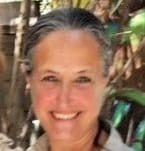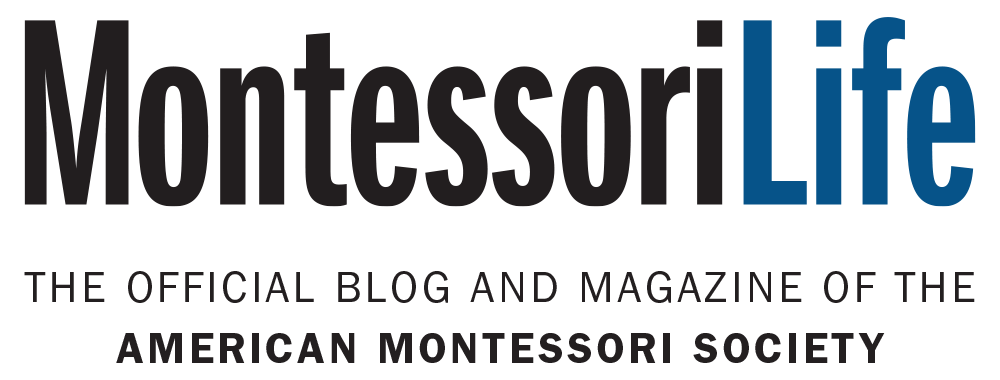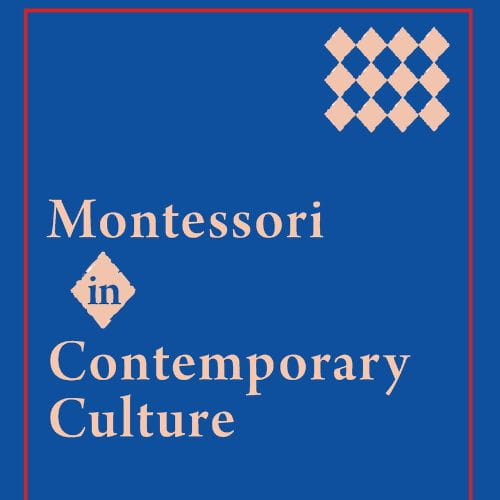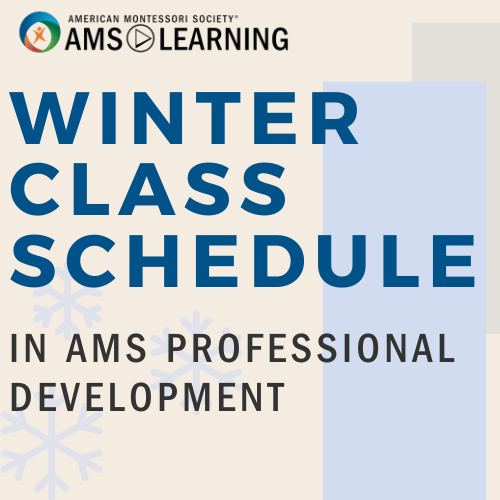Practical Life Through the Ages, Part Three–Secondary: The Adolescent’s Drive Toward Social Independence

"The chief symptom of adolescence is a state of expectation, a tendency towards creative work and a need for the strengthening of self-confidence."
Maria Montessori, From Childhood to Adolescence
In Part One and Part Two of our series on Practical Life through the ages, we explored the Early Childhood (EC) exercises that help the first-plane child develop order, coordination, concentration, and independence, and the Elementary exercises that build on these skills in the academic and social realms. While the first-plane child works toward physical autonomy, the second-plane child works toward social competence and intellectual independence. In our third installment, we explore Practical Life at the Secondary level and the adolescent's drive toward social and economic independence.
Practical Life is inherent in many, if not most, areas of the Montessori Secondary curriculum. In Montessori's vision for the adolescent, she called for an education which provides both an understanding of society as well as the skills with which the adolescent will use to contribute to that society as an adult. To appreciate the full scope of her plan, it is necessary to recognize the context from which it arose. After a brief background of this context, this article will examine the different ways that Montessori Secondary programs today reflect the goals of her original vision and how, specifically, Practical Life fits into the big picture of education for the adolescent.
Montessori's Vision of an “Erdkinder” Adolescent Program
Montessori (1948/2007) outlined her vision for adolescent education in her description of the Erdkinder, literally, “earth children.” She envisioned her plan against the postwar state of society, specifically, the rapid progression of technology and the material world, which, she wrote, compromised the security of an “assured future … [previously] provided for the young people by the family.” Even those citizens destined for “superior professions” could no longer be promised secure employment given the difficulties and new challenges of a postwar society in which adolescents would soon find themselves as adults.
Adaptability, she wrote, distinguished by strong character, quick wit, and courage was the single most important quality in a world “continually opening new careers, and at the same time closing or revolutionizing the traditional types of employment.” In modern terms, we know this as psychological resilience. To this end, Montessori argued for a wide and thorough education for the development of both intellectual and physical skills, arguing that “Men with hands and no head, and men with head and no hands, are equally out of place in the modern community.”
To address both the changing society and the needs of the adolescent, Montessori proposed a supervised residential rural school, such as a farm or land school. Such a setting, Montessori wrote, would promote social and economic independence (both driving needs of the adolescent) while students work and live cooperatively—managing farms, gardens, and animals; cooking and cleaning; and organizing venues through which their produce or wares are sold, with the proceeds going back into the school community.
Montessori is careful to point out that the idea of a farm school is not to have students simply working as agricultural laborers; they also learn the history of civilizations related to and the science behind the inventions that modernized agriculture, as well as study a wide range of other academic areas that are inherent in managing the farm or land school. Skilled adults are present as teachers, mentors, and community members, teaching the math and geometry skills necessary to build a barn, for example, the chemistry necessary to prepare the soil for a productive garden, or the financial principles involved in managing a business.
A land-based education of both the hands and the intellect, Montessori wrote, would fully address the adolescent's tendency toward creativity, self-expression, and independence; their need for manual work and physical activity; and their preparation both for college and work in a rapidly changing society—a society with which Montessori argued the secondary schools were, at the time of her writing, grossly out of step. Programs that aim to correct this misstep today include, among others, those that take into account Howard Gardners' multiple intelligences.
Montessori describes the goals and proposed benefits of the Erdkinder program in From Childhood to Adolescence:
... work on the land is an introduction both to nature and to civilisation and gives a limitless field for scientific and historic studies. If the produce can be used commercially this brings in the fundamental mechanism of society, that of production and exchange, on which economic life is based. This means that there is an opportunity to learn both academically and through actual experience what are the elements of social life. We have called these children the "Erdkinder" because they are learning about civilisation through its origin in agriculture. They are the "land-children."
Related to the history of civilizations, it is noteworthy that some schools with land- or farm-based programs integrate studies related to the ancestral history of and traditions related to the land on which their school is situated (an example can be seen here). This is a central aspect of place-based education.
Contemporary Montessori Secondary Programs
While a farm- or land-based residential program is beyond the financial or logistical range of many contemporary Montessori schools, some outstanding farm school and land school programs exist, where adolescents work and live together in a rural setting developing social independence, economic and business skills, environmental ethics, and preparation for college through rigorous academics. The Practical Life components of these programs are built into the academic areas of the curriculum, strengthening the adolescent's skills for the hand and skills for the head:
- gardening
- cooking and meal planning
- construction
- animal husbandry
- entrepreneurship
- business management
A more viable Secondary program for many Montessori schools is one that embodies the essential elements of Montessori's vision through a combination of personalized individual work and seminar-style or group-based learning that includes:
- honors-based academics (some at the college level)
- elective programs offering a wide range of courses in personal and creative expression, humanities, and STEM areas
- year-long senior projects wherein students explore individual interests through interdisciplinary research
- interstate travel, cultural exchange, trips abroad
- off-campus service learning and internships (including occupational and career education)
- health and fitness excursions
- environmental stewardship
- intercultural awareness and the development of global citizenship
- peace education
Many of these activities include Practical Life elements that are the same as or very similar to the types of activities in which students participate at land and farm schools; for example, gardening, animal husbandry, and construction projects, albeit on a more limited basis. Many schools have highly successful Secondary programs that balance academics with physical activities, indoor studies with outdoor studies, work for the head with work for the hand. An example of a program that integrates Montessori's vision into a program that combines “classrooms for conventional learning [with] a natural habitat abundant in opportunities for field study” can be seen here.
Regardless of the program type, adolescents refine skills learned at the Elementary level as they continue to use "checklists, work plans, planning calendars, and/or study guides that promote executive functioning skills such as time management, organization, and decision-making (American Montessori Society 2018 ). Moreover, "opportunities for collaborative work and student leadership" are provided through:
- regularly scheduled student-led community meetings
- activities such as inquiry-based problem solving and applied scientific method, which encourage diversity of perspectives, thoughts, and learning styles
- compassionate and respectful relationships and an appreciation of differences
Practical Life is thus built into the student's plan for their daily, weekly, and long-term work, as well as for navigating ongoing social relationships.
The adolescent's natural drive to be an accepted member of their community (and, eventually, society at large) corresponds to the fifth stage of Erikson's psycho-social model of development, Identity vs. Role Confusion. In this stage of life (12 – 18 years), the adolescent examines their identity and "learns the roles [they] will occupy as adults." The outcome of this stage is fidelity, which "involves being able to commit one's self to others on the basis of accepting others, even when there may be ideological differences." Identity formation is supported in Montessori Secondary programs by master teachers who are "attuned to these needs, safeguarding the young learners’ well being while preparing them for adulthood."
Practical Life, STEM, and Maker-Centered Learning
The past two decades have seen an increased number of STEM (science, technology, engineering, mathematics) programs in Montessori and non-Montessori schools alike. (Some programs identify as STEAM, to include art, or as STEAMi, to include art and innovation.) While these topics, especially science, math, and art, have always been important components of most school curricula, STEM/STEAM/STEAMi activities stand apart in that they utilize a cross-disciplinary approach, integrating the four or five disciplines in real-world applications. Put differently, the topics are not taught in isolation or from a strictly academic approach; rather, students utilize knowledge from each area in an integrated approach to solving real-world problems that arise in the creation of any number of products.
One venue for exploring STEM/STEAM/STEAMi-related projects is in maker spaces, which are becoming increasingly present in Montessori schools. The space is often a school art room or wood shop that has been repurposed with materials that promote inquiry, together with modern technology and equipment with which students can build, design, problem-solve, etc. Within the maker space, students have the opportunity to work on a range of creative endeavors that promote skills in “design, engineering, technology literacy, digital literacy, problem solving, and collaboration using twenty-first century technology” (Schneider, 2021). Ideally, an instructor is available to facilitate the student's work.
Such programs are not solely for adolescents, however, nor are their objectives restricted to creativity and technology education. The da vinci Lab for Creative Arts and Sciences serves students from kindergarten through 8th grade, and Technology for Good, for Upper Elementary students, uses technology “to empower students in service-learning projects.”
Closing Thoughts
Maker-centered learning might be thought of as Practical Life for the twenty-first century. We can suppose that Montessori would have had much to say about the need to teach twenty-first century skills, given that her original vision for the adolescent was developed in response to a changing society. The advancement of technology that she anticipated is a real and present factor involved in almost every aspect of our lives, the adolescent's life included. The adolescent, more than half a century later, still does not have the security of an “assured future … [previously] provided for the young people by the family.” And while there may be a different social paradigm than that of the times from which Montessori was writing, the need for adolescents to develop both intellectual and practical skills are as real and pressing today as ever. Whether these practical life skills are taught on a farm or in a maker space, the Montessori Secondary curriculum supports the adolescent's development and wellbeing by giving them the “opportunity to experience self-worth through real and important work—a process [Montessori] called valorization.” Through the realization that “they are strong, worthy, and capable of effort,” the adolescent gains the independence and skills they require to find a place in the community and to become “a respectful, responsible, and ethical contributor to society.”
Other References
American Montessori Society. Handbook for Teacher Education Program Affiliation, 2018.
Montessori, Maria. From Childhood to Adolescence. New York: Schocken Books, [1948] 1973.
Schneider, Mary. MEIPN Elementary 1 Practical Life Workbook. Washington: MEIPN, 2021.

Cynthia Brunold Conesa |
Interested in writing a guest post for our blog?
Let us knowThe opinions expressed in Montessori Life are those of the authors and do not necessarily represent the position of AMS.















